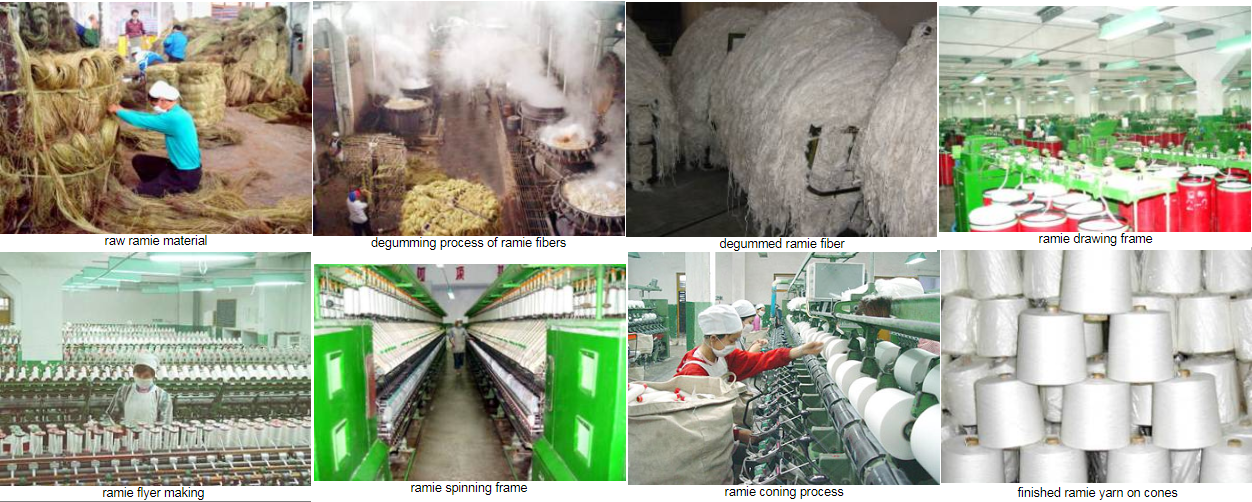Ramie
Order nowTHE CROP
Ramie is a member of the Uricacecae or nettle family and is a hardy perennial which produces a larger number of unbranched stems from unterground rhizomes. The stems of ramie grow to a height of 1 - 2.5m. The crop is generally propagated vegetatively, using rhizome or stem cuttings. Production begins to decline one roots become overcrowded.
HARVESTING
Ramie is normally harvested two to three times per year - under good growing conditions up to six times. Harvesting is done just before or soon after the onset of flowering, since there is a decline in plant growth at this stage and maximum fiber contect is achieved. Stems are harvested by cutting just above the lateral roots or the stem can be bent, to enable the core to be broken and the cortex to be stripped from the plant in situ. Mechanical harvesters have been developed but are not used commercially. After harvesting, stems are decorticated while the plants are fresh as the bark gets harder to remove as the plant dries out. The bark ribbons are dried as quickly as possible to prevent attack by bacteria or funghi.
EXTRACTION OF FIBER
The extraction of the fiber occurs in three stages.
- De-corication
The cortex (or bark) is removed, either by hand or machine.
- Scraping the cortex to remove most of the outer bark, the parenchyma in the bast layer and some of the gums and pectins.
- Washing, drying and de-gumming of the residual cortex material to extract the spinnable fiber.
THE RAMIE FIBER
Ramie fiber is one of the premium vegetable fibers. The utlimative fibers are exceptionally long and are claimed to be the longest of vegetable origin, with one report claiming the fibers range up to 580mm, averaging about 125mm. Ramie fiber is very durable, is pure white in colour and has a silky luster.
For the hand spinner, ramie is treated similar to flax in that it can be either wet or dry spun. A wet spun yarn will produce a mooth softer yarn with high luster, while a dry psun yarn will feel hairier, have less luster and a harsher handle. It can readiliy be blended with other fibers such as wool or silk, although the length of ramie can sometimes cause difficulties.

